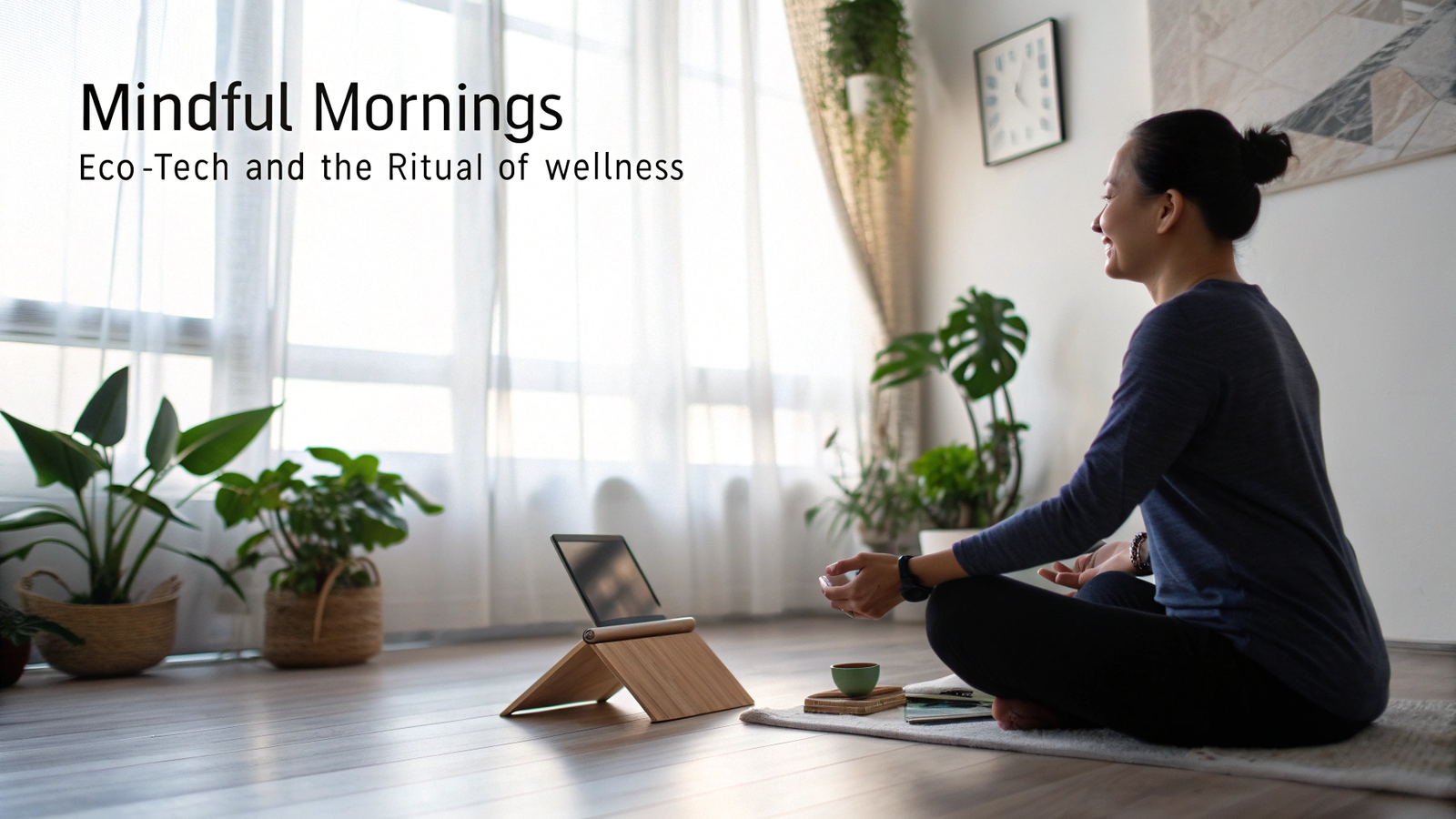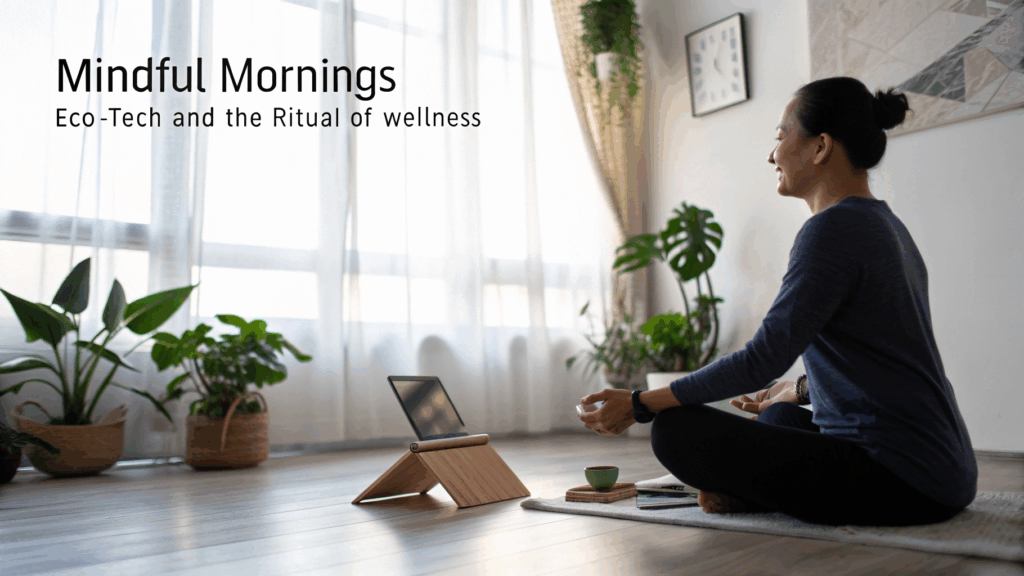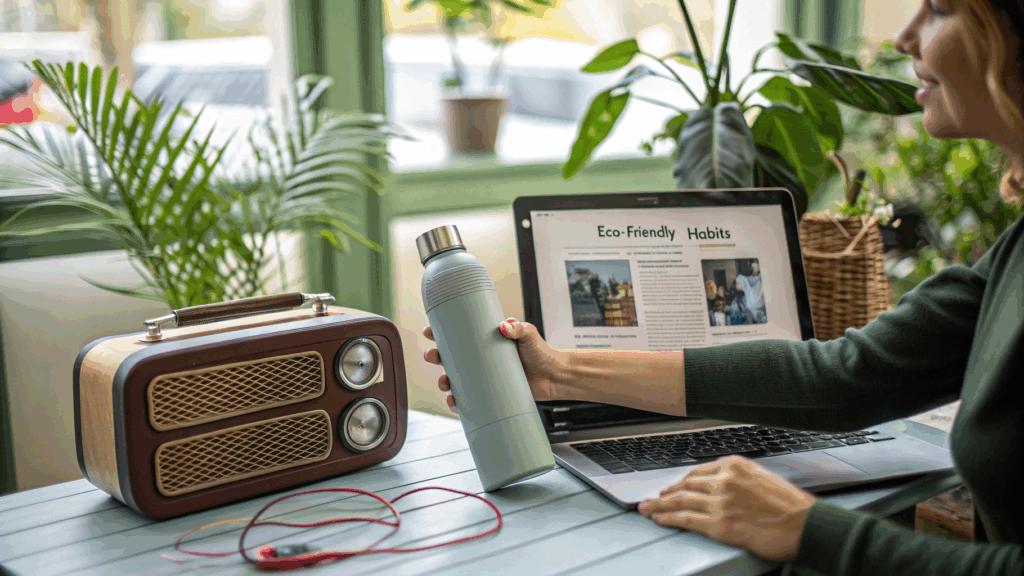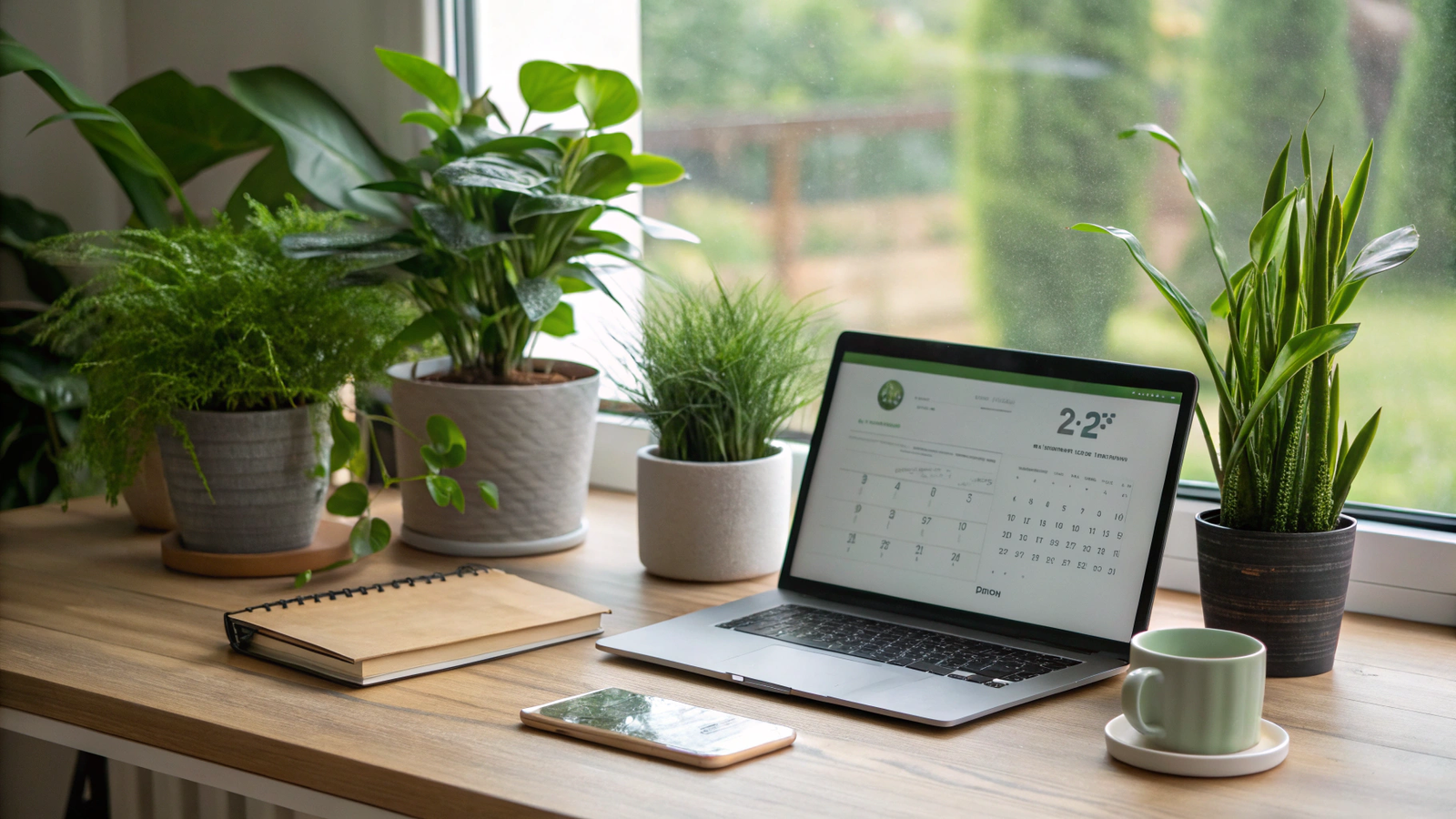
Mindful Mornings: Eco-Tech and the Ritual of Wellness
In a world that often rushes from one task to the next, the morning holds rare potential: a quiet moment to reconnect—with ourselves, with nature, and with the habits that shape our lives. As the sun rises and a new day begins, so too does the opportunity to live intentionally. In this space between sleep and activity, wellness and sustainability can meet in a powerful ritual—supported not just by mindfulness, but by eco-conscious technology.
Welcome to the era of mindful mornings, where daily routines are transformed through the gentle guidance of eco-tech. From smart lights that rise with the sun to filtered water systems that nourish the body and protect the planet, eco-tech tools help us create mornings that are healthier, calmer, and greener—without complicating life.
This article explores how integrating green technology into morning rituals can elevate both personal well-being and environmental consciousness. It’s not about perfection or complexity, but rather, making better choices feel natural, automatic, and even joyful—from the moment you wake up.

1. The Case for Mindful Mornings
How we start our day has a significant impact on our physical, mental, and emotional well-being. A mindful morning allows us to:
- Reduce stress before the workday begins
- Establish healthy habits
- Improve mood and focus
- Strengthen our connection with the environment
Pairing mindfulness with sustainability helps extend these benefits beyond ourselves, contributing to a healthier planet. The average person makes dozens of decisions in the first hour after waking—from what to eat to how to get ready. Each of these moments is a chance to minimize waste, conserve energy, and nourish wellness.
Eco-tech helps transform these decisions into rituals—automated, intuitive, and environmentally friendly.
2. Waking Up: Light, Temperature, and Peace
a. Circadian Lighting
Our bodies are governed by circadian rhythms—biological cycles influenced by natural light. Bright white light first thing in the morning can disrupt this rhythm, while warmer, gradual lighting helps us wake more gently.
Smart lighting systems like Philips Hue, LIFX, or Nanoleaf can be set to simulate a sunrise:
- Gradually increase light intensity over 15–30 minutes
- Shift color temperature from soft amber to daylight white
- Sync with alarm clocks or natural sunrise times
This small adjustment improves mood, alertness, and hormone regulation—without consuming unnecessary energy, thanks to low-wattage, long-life LED bulbs.
b. Smart Thermostats
Heating the entire house before dawn isn’t energy-efficient. Smart thermostats like Google Nest or Ecobee learn your wake-up time and:
- Warm only the rooms you use
- Optimize heat delivery using occupancy sensors
- Adjust based on outdoor weather
This creates a cozy, energy-efficient environment, letting you step out of bed into comfort—without the guilt of wasted energy.

3. Clean Air, Clear Mind: Breathing Easy with Tech
Indoor air quality is often worse than outdoor air—especially in winter months. A clear, mindful start begins with fresh air.
a. Smart Air Purifiers
Devices like Dyson Purifier, Molekule, and Levoit remove allergens, VOCs, dust, and pollutants from indoor air. When equipped with sensors, they automatically adjust fan speed and filter cycles, maintaining ideal air quality as you sleep and wake.
Some systems also provide:
- Real-time AQI (air quality index) monitoring
- App-based tracking
- Eco-modes for energy savings
b. Humidity Control
Too much or too little moisture can lead to dry skin, congestion, or mold. Smart humidifiers and dehumidifiers maintain optimal levels, syncing with air monitors to keep your home’s environment healthy and balanced—a crucial part of morning wellness.
4. Mindful Hydration: Water with Purpose
After hours of sleep, hydration is vital. But how we drink our water also affects the planet.
a. Smart Water Filters
Eco-friendly systems like Hydroviv, Berkey, or LARQ offer clean, mineral-balanced water without the waste of plastic bottles or inefficient boiling. Some models use:
- Reusable filtration cartridges
- UV purification
- Connected monitoring to alert you when to replace filters (only when necessary)
These technologies reduce plastic, energy, and even overconsumption, allowing for a thoughtful hydration ritual that supports wellness and environmental care.
b. Eco-Kettles and Coffee Makers
Smart kettles (like Smarter iKettle) boil only as much water as needed, cutting both wait time and electricity use. Eco-mode coffee machines or French presses with smart plug timers allow for fresh, low-impact morning brews.
Pair these with compostable coffee pods, local beans, or fair-trade tea for a ritual that’s mindful from source to sip.

5. Sustainable Skincare and Hygiene
Self-care often includes showering, brushing teeth, and skincare—but these routines are often water- and energy-intensive.
a. Water-Saving Showerheads
Devices like Nebia by Moen, Hai Smart Shower, or Kohler Konnect provide:
- Eco-friendly mist/jet combinations that save up to 45% water
- Timers and flow trackers
- Custom presets for temperature and duration
Some even track water usage via smartphone, letting you set conservation goals or join gamified eco-challenges with others.
b. Smart Bathroom Fixtures
Eco-tech in the bathroom extends to:
- Touchless faucets that stop running while brushing teeth
- Smart mirrors with low-energy LEDs, defogging features, and usage tracking
- Bidets with water-saving modes, replacing paper waste
These tools make your hygiene routine more sustainable—without requiring extra effort.
6. Nourishing the Body (and Planet) with Smart Kitchens
A mindful breakfast powers your day—but it can also reflect your values.
a. Smart Appliances
Smart toasters, blenders, and induction cooktops use:
- Precise energy delivery
- Timers and shut-offs
- Voice controls or app integrations
They minimize waste and enhance food safety while giving you more time to focus on mindfulness or meditation. Induction cooktops are particularly efficient, using less than half the energy of traditional electric or gas stoves.
b. Food Waste Management
Smart fridges like those from Samsung Family Hub or LG ThinQ monitor:
- Food freshness
- Expiry dates
- Temperature adjustments
Pairing this with apps like Too Good To Go, Olio, or home composters reduces both waste and overconsumption—a key tenet of mindful eating.

7. Gentle Movement: Integrating Fitness and Flow
Physical activity in the morning doesn’t have to mean a full workout. A short stretch, yoga session, or walk can reset your nervous system—and eco-tech can support it.
a. Smart Yoga Mats and Devices
Interactive mats like YogiFi or Mirror offer guided routines, track posture, and provide corrections without needing to travel to a gym. Most operate with minimal electricity and reduce the carbon footprint of commuting.
b. Wearables and Apps
Fitness wearables from Fitbit, Apple, or Oura Ring track:
- Sleep recovery
- Stress levels
- Heart rate variability
Morning insights from these devices can guide your choice of movement and mindfulness exercises, allowing you to listen to your body—an eco-system unto itself.
8. Digital Mindfulness: Tech That Promotes Stillness
Ironically, one of the most impactful uses of technology in the morning is to help us unplug.
a. Guided Meditation and Breathwork
Apps like Headspace, Calm, or Insight Timer can be integrated with smart speakers or wearables, offering:
- Five-minute meditations
- Morning gratitude journaling
- Guided breathwork for energy and focus
These platforms encourage presence before the distractions of the day begin. Set your smart speaker to play morning affirmations or calming music instead of checking the news or social media.
b. Smart Displays and Routines
Devices like Google Nest Hub or Amazon Echo Show can run “Wellness Routines”:
- Dimmed lighting
- Soothing music or nature sounds
- Hydration and movement reminders
- Healthy breakfast recipe suggestions
They become personal wellness concierges, reducing decision fatigue while supporting calm, consistent habits.

9. Eco-Conscious Wardrobes and Dressing
Even dressing can be optimized for wellness and sustainability.
a. Smart Wardrobe Assistants
Apps like Cladwell or Save Your Wardrobe help reduce fast fashion waste by:
- Suggesting outfit combinations from existing clothes
- Tracking laundry needs to reduce unnecessary washing
- Encouraging upcycling and donations
Smart closets can also notify you when you haven’t worn an item for months—prompting decluttering and more mindful choices.
b. Sustainable Fabric Care
Eco-friendly laundry systems with AI washing cycles (e.g., from Samsung or Bosch) detect load size and fabric type, using the least amount of water and energy needed. Many connect to smart grids for off-peak use, maximizing environmental benefits.
